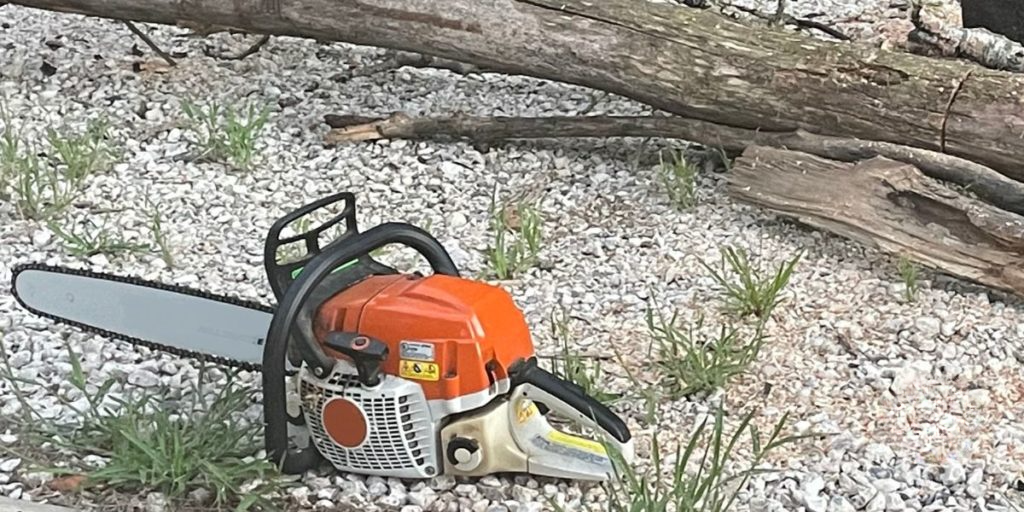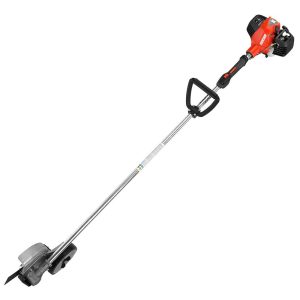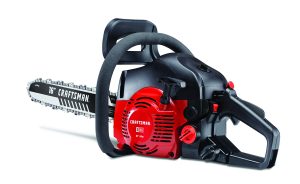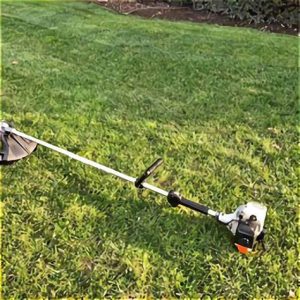How to Fix a Dead Chainsaw in 13 Easy Steps
The chainsaw, for instance, can be used in filth because it is designed to do so. The act of cutting down a tree creates airborne particles such as dust and wood chips.
Even if your chainsaw was designed to endure rough treatment, it won’t perform as well or even start if you don’t keep it in good working order.
A chainsaw will not start if it is not supplied with sufficient air, fuel, or spark. A dirty carburetor, a faulty ignition coil, a defective recoil starter, stale fuel, or a clogged air filter are all potential causes.
In this article, we’ll discuss some of the other reasons—such as water damage—why your chainsaw might not be turning over. The chainsaw must be turned off and the spark plug boot removed before any maintenance can be performed.

Prior to diagnosing, repairing, or operating the equipment, make sure you’ve read and understood all of the safety instructions that came with it. If you are unsure of how to proceed, lack the necessary expertise, or are unable to do the repair safely, you should seek the advice of a professional.
Table of Contents
Chainsaw Problems and How to Fix Them
| Problems | Solutions |
|---|---|
| Bad Switch or Wrong Choke Setting | When starting a cold engine, you must have the choke engaged to reduce airflow. Once the engine has warmed up, you can take the choke off and keep the engine running. Switches and ground wires can fail, so it’s important to replace them as soon as possible. |
| Old Fuel | If your fuel is older than 30 days, you should replace it. |
| Incorrect Fuel | Use up all the gas. Two-cycle chainsaw engines require a mixture of gas and oil. In order to function, 4-cycle engines need to use a pure fuel. |
| Plugged Air Filter | If the air filter is clogged, take it out and clean it. If the filter is soaked, clogged, or otherwise damaged, you should get a new one. |
| Bad Spark Plug | Changing out a faulty spark plug. The spark plug wire must be properly inserted and the electrode gap must be correct. |
| Faulty Ignition Coil | Substitute a new ignition coil for an old one. |
| Plugged Fuel Filter | Take out the old fuel filter and replace it with a new one. |
| Weak Primer Bulb | If the primer bulb is broken, replace it. |
| Clogged, Dry or Cracked Fuel Line | A fuel line restriction can be eliminated by clearing out the obstruction. If a fuel line becomes dry or cracked, or if a clog cannot be removed, it must be replaced. |
| Dirty Carburetor | Take the carburetor apart and clean it. Fix the broken pieces or replace the whole carburetor. |
| Bad Recoil Starter | Repair the recoil starter by replacing the spring and restringing it. In the event that the recoil starter has been damaged, a replacement must be obtained. |
| Plugged Spark Arrestor | Cancel the muffler’s spark arrestor. It just needs to be removed, brushed off with a wire brush, and put back in place. Take care of a spark arrestor that has been damaged by replacing it. |
| Flooded Chainsaw | Use one of the aforementioned solutions to fix the problem and get the chainsaw going again. |
The Chainsaw Won’t Start: 13 Possible Causes
A Chainsaw with a Broken Switch or Incorrect Choke
The correct starting position for a chainsaw’s on/off switch is essential. Some models of chainsaw have a switch that also functions as a choke lever, while others have a separate on/off switch and choke lever.
Any chainsaw with a cold engine requires the choke to be engaged. To start the engine, the choke reduces airflow so that more fuel can enter the combustion chamber.
The chainsaw cannot be used after the engine has warmed up unless the choke is turned off. Consult your chainsaw’s manual for instructions on how to activate the choke if you’re unsure.
To learn how to start a Stihl, Husqvarna, or Echo chainsaw, click on the links provided.
One of the many reasons a chainsaw won’t turn over is a broken switch or a corroded ground wire. A multimeter can be used to check the switch’s functionality. Changing out a faulty switch. Fix or replace the ground if it is damaged.
Damage to a Chainsaw Caused by Bad Fuel
The chainsaw may have trouble starting if the gas is old. As soon as 30 days after purchase, gas can lose effectiveness and begin to break down.
Most fuels on the market today include ethanol, an alternative fuel. It’s a biofuel made from plants that reduces the negative impact of traditional fuels.
Today, ethanol can be safely used in most vehicles, but it shouldn’t be put into a chainsaw because it can damage the engine. Moisture can easily be drawn into a fuel system that contains ethanol.
Over time, the combination of water and ethanol will dry into a varnish that can clog fuel injectors. To the point where the chainsaw won’t start because of a lack of fuel, this is a common problem.
It’s best to use gasoline within 30 days of purchase because its quality starts to decline quickly after purchase. You can extend the gas’s shelf life by using a fuel stabilizer if you won’t be able to use it up that quickly.
Fuel stabilizers vary in their effectiveness and the amount of time they can keep fuel stable.
Unless the manufacturer specifies otherwise, you should never assume that the stability aid you are using will last longer than 30 days.
You should stay away from E15 and E85 gas, which contain up to 15% and 85% ethanol content, respectively. The best fuel for your chainsaw is discussed in detail.
If you are having trouble starting the vehicle and discover that the fuel is old, you should refill the tank.
To help remove moisture and clean the fuel system, you can use an additive like Sea Foam Motor Treatment or STA-BIL.
Once you’ve managed to get the chainsaw started, you should let the fuel run through the chainsaw and into the fuel system.
Use Of Incorrect Fuel in a Two- or Four-Cycle Chainsaw
It’s crucial to know which fuel works best for your chainsaw. When this is done incorrectly, it can ruin the engine.
Two-cycle engines are used in the vast majority of gas-powered chainsaws on the market today, but four-cycle models do exist.
Fuel Needs for a Two-Cycle Chainsaw:
When it comes to refueling, a 2-cycle chainsaw will only need one fill port. There is a 50:1 or 40:1 ratio of gas to oil in the mixture. Which ratio is ideal is dependent on the maker.
Several popular chainsaw manufacturers agree on the following ratio and oil:
| Manufacture | Gas to Oil Mix | 2-Cycle Oil | Premixed Fuel |
|---|---|---|---|
| ECHO | 50:1 | Echo | Red Armor Pre-Mix |
| Husqvarna | 50:1 | Husqvarna | XP Pre-Mix |
| Poulan Pro | 50:1 | Poulan Pro | |
| Remington | 40:1 | ||
| Ryobi | 50:1 | Ryobi | |
| Stihl | 50:1 | Stihl | Moto Mix Pre-Mix |
Use gasoline with an octane rating of 89 or higher and no more than 10% ethanol to make the gas and oil mixture. Premium 2-cycle engine oil that has been certified as ISO-L-EGD and JASO M345 FD should be blended with the fuel.
When operating a chainsaw, NEVER use undiluted gas. It has a tendency to run extremely dry, which can lead to engine seizure if not addressed. You might need a new chainsaw if you mess up like that.
The Fuel Requirements of a Four-Cycle Chainsaw:
Four-cycle chainsaws’ fuel and oil tanks are located in separate openings. You should only use gasoline with an octane rating of 89 or higher and no more than 10% ethanol.
Ethanol-free fuel
To get the most out of your chainsaw, and the least amount of performance degradation, you should invest in the more expensive fuel that does not contain ethanol.
Even though it’s more expensive, having pre-mixed fuel on hand eliminates the need to visit the gas station.
There are links to various brands of premixed oil up top. In addition, Tru-50:1 Fuel’s Mix, 40:1 Mix, and 4-Cycle Fuel are superb choices.
A Chainsaw with a Clogged Air Filter
A chainsaw’s air filter serves to remove debris from the air entering the motor. In order to protect the engine from dirt, a filter is installed.
Sawdust and dirt can clog the air filter, preventing enough air from reaching the carburetor throat, if it isn’t cleaned or replaced regularly.
When air is scarce, it can be difficult to start and maintain the chainsaw’s rotation.
The typical homeowner should change the air filter once a year and clean it multiple times during the season. Frequent use of your chainsaw will necessitate more frequent filter cleanings and replacements.
It’s important to check the air filter to make sure the engine doesn’t overheat and break down. I understand this is an extra chore, but testing the filter’s health will only take a minute or two.
A new filter should be installed if the old one is severely clogged or broken. Keep in mind that a chainsaw requires a special air filter to be used.
Every chainsaw model and brand uses a different kind of air filter. In my articles on Stihl, Husqvarna, and ECHO chainsaws, I detail how to clean the filters used by these manufacturers, among many others.
Refer to the manual if you are unsure of the filter type you are using or how to clean it.
Faulty Chainsaw Spark Plug
The spark plug is what gets the chainsaw going and keeps it going. Spark plugs are a consumable that should be replaced once a year by the average user.
Maintenance on a chainsaw could be as frequent as once per month if you use it frequently. Every so often, check the spark plug and clean it with a wire brush before installing a new one.
Engine problems can be caused by a spark plug that is dirty. If a spark plug has turned very black, the electrode is burnt, or the porcelain has broken, it needs to be replaced.
Observe the manufacturer’s recommended spark plug gap and tighten the spark plug wire. Even if you don’t have any of these, you may have trouble getting the engine started.
Faulty Ignition Coil on a Chainsaw
Verify the ignition coil if the spark plug is in good shape and you still have no spark. If the ignition coil’s winding comes unwound, a short will occur.
As a result, the spark plug will not receive the necessary voltage to produce a spark. Because of this, your chainsaw will malfunction.
An ohm meter can be used to detect a bad ignition coil by indicating a lack of continuity. If you find a broken ignition coil, you should replace it immediately.
A Chainsaw with a Clogged Fuel Filter
It is the job of the fuel filter to prevent foreign matter like dirt and debris from entering the fuel system. Inside the fuel tank is a cylindrical filter. It’s connected to the gas line.
Filters can become clogged from lack of maintenance or from allowing dirty fuel to be used, both of which reduce fuel flow. Because of this, the saw may not start or operate slowly.
If you are a homeowner who only uses the saw in emergencies or rarely, you should change the fuel filter. You may need to replace the saw as often as every three months if you use it frequently for cutting wood.
Replace a chainsaw fuel filter:
- When you take off the fuel cap, wipe the area around it to keep dirt from going into the fuel tank.
- Take off the gas cap (allow the chainsaw to cool down first if you have been using it).
- Hook the fuel line with a clean, bent piece of wire, and pull the fuel filter out of the tank.
- Hold the fuel line firmly while you pull the filter out of the fuel line. Keep your hand on the fuel line.
- To put in a new fuel filter, put the male end into the fuel line and make sure it is secure.
- Put the filter in the gas tank and put the gas cap back on.
Bad Primer Bulb on a Chainsaw
It is impossible for fuel to reach the carburetor if the primer bulb is cracked and cannot fill with fuel. Switch out the old bulb for a new primer one.
Damaged or Clogged Chainsaw Fuel Line
If the fuel line becomes clogged, it can cause a shortage of fuel. The chainsaw might not start if this happens. Take off the clogged fuel line and spray some carburetor cleaner in there to help break up the clog.
To get rid of it, just blow compressed air through the pipe.
If you are unable to clear the fuel line or you discover that it is dry, cracked, or punctured, you will need to get a new fuel line.
A Chainsaw with a Filthy Carburetor
The carburetor controls how much gas is introduced into the cylinder along with the air to start a fire. The carburetor will stop working properly if old fuel is used. This may prevent your chainsaw from firing up.
You can probably manage to clean your carburetor if you have a basic understanding of mechanics. It is recommended to disassemble the carburetor and clean it with special carburetor cleaner.
You may need to rebuild the carburetor or get a new one if cleaning it doesn’t get it working.
Chainsaw With a Bad Recoil Starter
A recoil is used to kickstart a chainsaw’s motor. Recoil systems can stop functioning due to faulty pulleys, missing or loosened springs, or damaged clips.
Replacing the spring and restringing the recoil is an option. If the pulley or clips in your recoil are broken, the whole assembly should be replaced rather than trying to fix it.
The Spark Arrester On a Chainsaw Was Plugged.
Soot can accumulate on the spark arrestor, a tiny screen inside the muffler. It is impossible to start a chainsaw with a blocked spark arrestor because the airflow is cut off.
Spark arrestor needs to be taken apart and cleaned with a wire brush. If the mesh spark arrestor screen gets too dirty to clean or gets damaged, you should replace it.
Don’t ever use a chainsaw without this screen, or one that isn’t completely hole-free. Hot debris ejected from a saw without a screen poses a fire and burn hazard.
Chainsaw’s Engine Got Wet
It is possible to flood the engine by repeatedly pulling the starter rope while the choke is closed.
The primer bulb or the starter rope can be pulled too many times, or the switch can be turned off and on too often, both of which result in the same thing.
Chainsaw Repair: What to Do If the Motor Gets Wet
Here are a few things you can try to get your flooded chainsaw going:
Option 1:
- Put the choke in the open/run position and turn the key on.
- Continue pulling the starter rope while pressing the throttle trigger. Five to fifteen pulls may be required before it begins. First, the motor in your chainsaw will sputter. Two or three more pulls ought to get it going.
Option 2:
- Switch off the power source.
- You need to take out the spark plug and clean it.
- To start, pull the rope six to eight times.
- Insert a spark plug that has been cleaned and dried back into the ignition.
- To begin, please place the switch in the “on” position.
- With the chainsaw’s choke removed and set to open/run, turn it on.







